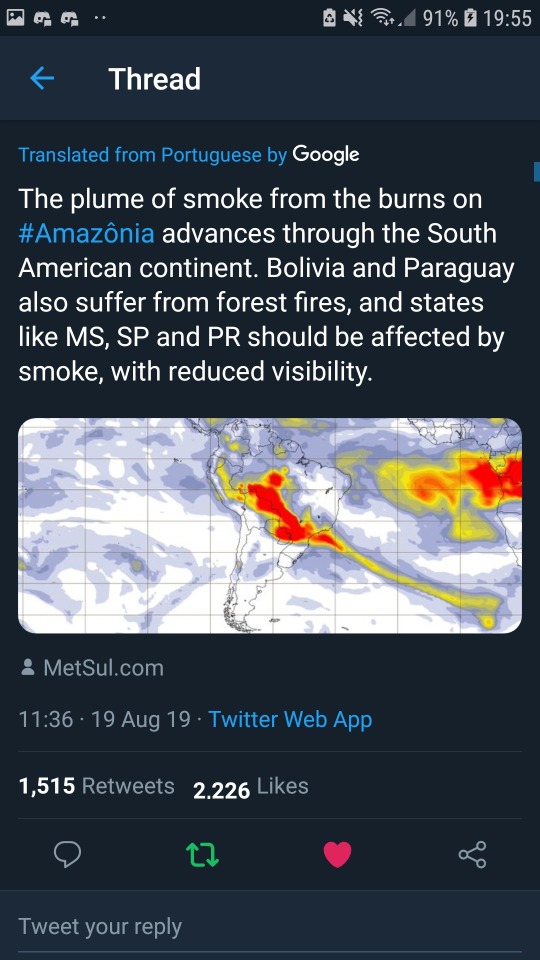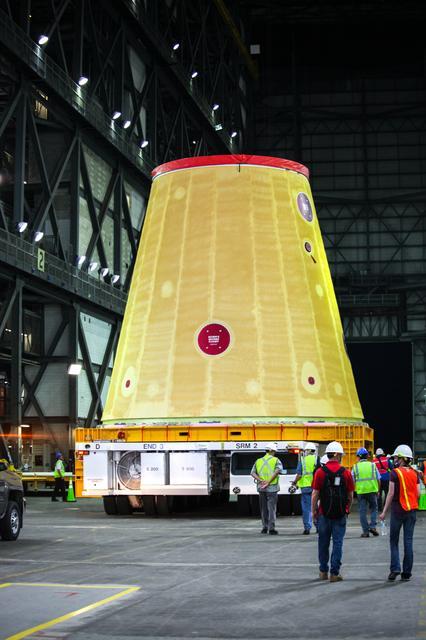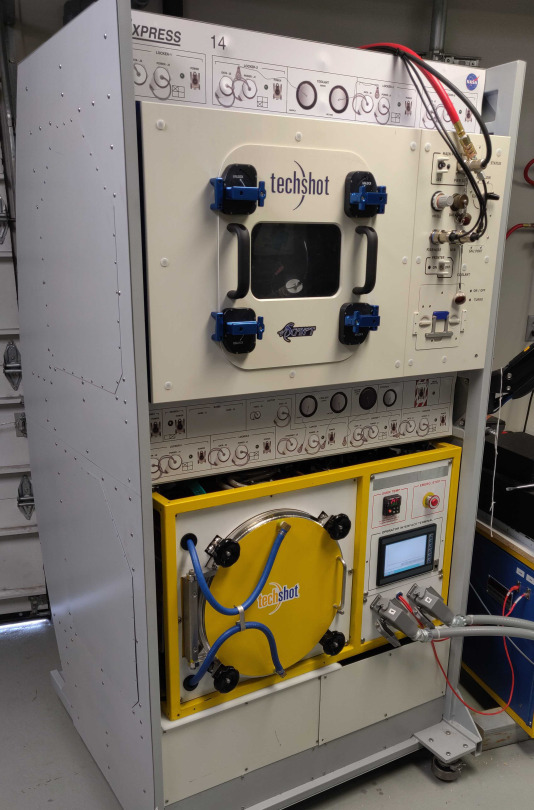Dark Energy

Dark Energy
This bone-chilling force will leave you shivering alone in terror! An unseen power is prowling throughout the cosmos, driving the universe to expand at a quickening rate. This relentless pressure, called dark energy, is nothing like dark matter, that mysterious material revealed only by its gravitational pull. Dark energy offers a bigger fright: pushing galaxies farther apart over trillions of years, leaving the universe to an inescapable, freezing death in the pitch black expanse of outer space. Download this free poster in English and Spanish and check out the full Galaxy of Horrors.
Make sure to follow us on Tumblr for your regular dose of space!
More Posts from Thehkr and Others
This is São Paulo at 3 PM today

No, this is not just a dark storm cloud
It's smoke


Just this year the deforestation rate of the Amazon rainforest rose more than 60%. This is a direct consequence of Jair Bolsonaro's government, treating the forest as an area of exploitation and not preservation, attempting to cease the rights of our indigenous population and straight up lying and censoring data
Our forest is dying and nobody cares

The Space Shuttle Challenger landed #OTD in 1983.
Here are astronauts Richard Truly & Guion Bluford of Space Transport System 8 (STS-8) grabbing some shut-eye before the wrap up of their mission. This mission had:
The first African American, Guion Bluford, to fly in space
The first night launch and landing during the Space Shuttle Program
Make sure to follow us on Tumblr for your regular dose of space: http://nasa.tumblr.com

The Big Build: Artemis I Stacks Up
Our Space Launch System (SLS) rocket is coming together at the agency’s Kennedy Space Center in Florida this summer. Our mighty SLS rocket is set to power the Artemis I mission to send our Orion spacecraft around the Moon. But, before it heads to the Moon, NASA puts it together right here on Earth.

Read on for more on how our Moon rocket for Artemis I will come together this summer:
Get the Base

How do crews assemble a rocket and spacecraft as tall as a skyscraper? The process all starts inside the iconic Vehicle Assembly Building at Kennedy with the mobile launcher. Recognized as a Florida Space Coast landmark, the Vehicle Assembly Building, or VAB, houses special cranes, lifts, and equipment to move and connect the spaceflight hardware together. Orion and all five of the major parts of the Artemis I rocket are already at Kennedy in preparation for launch. Inside the VAB, teams carefully stack and connect the elements to the mobile launcher, which serves as a platform for assembly and, later, for fueling and launching the rocket.
Start with the boosters

Because they carry the entire weight of the rocket and spacecraft, the twin solid rocket boosters for our SLS rocket are the first elements to be stacked on the mobile launcher inside the VAB. Crews with NASA’s Exploration Ground Systems and contractor Jacobs team completed stacking the boosters in March. Each taller than the Statue of Liberty and adorned with the iconic NASA “worm” logo, the five-segment boosters flank either side of the rocket’s core stage and upper stage. At launch, each booster produces more than 3.6 million pounds of thrust in just two minutes to quickly lift the rocket and spacecraft off the pad and to space.
Bring in the core stage

In between the twin solid rocket boosters is the core stage. The stage has two huge liquid propellant tanks, computers that control the rocket’s flight, and four RS-25 engines. Weighing more than 188,000 pounds without fuel and standing 212 feet, the core stage is the largest element of the SLS rocket. To place the core stage in between the two boosters, teams will use a heavy-lift crane to raise and lower the stage into place on the mobile launcher.
On launch day, the core stage’s RS-25 engines produce more than 2 million pounds of thrust and ignite just before the boosters. Together, the boosters and engines produce 8.8 million pounds of thrust to send the SLS and Orion into orbit.
Add the Launch Vehicle Stage Adapter

Once the boosters and core stage are secured, teams add the launch vehicle stage adapter, or LVSA, to the stack. The LVSA is a cone-shaped element that connects the rocket’s core stage and Interim Cryogenic Propulsion Stage (ICPS), or upper stage. The roughly 30-foot LVSA houses and protects the RL10 engine that powers the ICPS. Once teams bolt the LVSA into place on top of the rocket, the diameter of SLS will officially change from a wide base to a more narrow point — much like a change in the shape of a pencil from eraser to point.
Lower the Interim Cryogenic Propulsion Stage into place

Next in the stacking line-up is the Interim Cryogenic Propulsion Stage or ICPS. Like the LVSA, crews will lift and bolt the ICPS into place. To help power our deep space missions and goals, our SLS rocket delivers propulsion in phases. At liftoff, the core stage and solid rocket boosters will propel Artemis I off the launch pad. Once in orbit, the ICPS and its single RL10 engine will provide nearly 25,000 pounds of thrust to send our Orion spacecraft on a precise trajectory to the Moon.
Nearly there with the Orion stage adapter

When the Orion stage adapter crowns the top of the ICPS, you’ll know we’re nearly complete with stacking SLS rocket for Artemis I. The Orion Stage Adapter is more than just a connection point. At five feet in height, the Orion stage adapter may be small, but it holds and carries several small satellites called CubeSats. After Orion separates from the SLS rocket and heads to the Moon, these shoebox-sized payloads are released into space for their own missions to conduct science and technology research vital to deep space exploration. Compared to the rest of the rocket and spacecraft, the Orion stage adapter is the smallest SLS component that’s stacked for Artemis I.
Top it off

Finally, our Orion spacecraft will be placed on top of our Moon rocket inside the VAB. The final piece will be easy to spot as teams recently added the bright red NASA “worm” logotype to the outside of the spacecraft. The Orion spacecraft is much more than just a capsule built to carry crew. It has a launch abort system, which will carry the crew to safety in case of an emergency, and a service module developed by the European Space Agency that will power and propel the spacecraft during its three-week mission. On the uncrewed Artemis I mission, Orion will check out the spacecraft’s critical systems, including navigation, communications systems, and the heat shield needed to support astronauts who will fly on Artemis II and beyond.
Ready for launch!

The path to the pad requires many steps and check lists. Before Artemis I rolls to the launch pad, teams will finalize outfitting and other important assembly work inside the VAB. Once assembled, the integrated SLS rocket and Orion will undergo several final tests and checkouts in the VAB and on the launch pad before it’s readied for launch.
The Artemis I mission is the first in a series of increasingly complex missions that will pave the way for landing the first woman and the first person of color on the Moon. The Space Launch System is the only rocket that can send NASA astronauts aboard NASA’s Orion spacecraft and supplies to the Moon in a single mission.
Make sure to follow us on Tumblr for your regular dose of space!

How was it possible for the world to be so beautiful and so cruel at the same time?
Gillian Rubinstein (via quotemadness)
Sea Level Rise is on the Rise
As our planet warms, sea levels are rising around the world – and are doing so at an accelerating rate. Currently, global sea level is rising about an eighth of an inch every year.

That may seem insignificant, but it’s 30% more than when NASA launched its first satellite mission to measure ocean heights in 1992 – less than 30 years ago. And people already feel the impacts, as seemingly small increments of sea level rise become big problems along coastlines worldwide.

Higher global temperatures cause our seas to rise, but how? And why are seas rising at a faster and faster rate? There are two main reasons: melting ice and warming waters.
The Ice We See Is Getting Pretty Thin
About two-thirds of global sea level rise comes from melting glaciers and ice sheets, the vast expanses of ice that cover Antarctica and Greenland. In Greenland, most of that ice melt is caused by warmer air temperatures that melt the upper surface of ice sheets, and when giant chunks of ice crack off of the ends of glaciers, adding to the ocean.

In Antarctica – where temperatures stay low year-round – most of the ice loss happens at the edges of glaciers. Warmer ocean water and warmer air meet at the glaciers’ edges, eating away at the floating ice sheets there.

NASA can measure these changes from space. With data from the Ice, Cloud and land Elevation Satellite-2, or ICESat-2, scientists can measure the height of ice sheets to within a fraction of an inch. Since 2006, an average of 318 gigatons of ice per year has melted from Greenland and Antarctica’s ice sheets. To get a sense of how big that is: just one gigaton is enough to cover New York City’s Central Park in ice 1,000 feet deep – almost as tall as the Chrysler Building.
With the Gravity Recovery and Climate Experiment Follow-On (GRACE-FO) mission – a partnership with the German Research Centre for Geosciences – scientists can calculate the mass of ice lost from these vast expanses across Greenland and Antarctica.

It’s not just glaciers in Antarctica and Greenland that are melting, though. Nearly all glaciers have been melting in the last decade, including those in Alaska, High Mountain Asia, South America, and the Canadian Arctic. Because these smaller glaciers are melting quickly, they contribute about the same amount to sea level rise as meltwater from massive ice sheets.

The Water’s Getting Warm
As seawater warms, it takes up more space. When water molecules get warmer, the atoms in those molecules vibrate faster, expanding the volume they take up. This phenomenon is called thermal expansion. It’s an incredibly tiny change in the size of a single water molecule, but added across all the water molecules in all of Earth’s oceans – a single drop contains well over a billion billion molecules – it accounts for about a third of global sea level rise.

So Much to See
While sea level is rising globally, it’s not the same across the planet. Sea levels are rising about an eighth of an inch per year on average worldwide. But some areas may see triple that rate, some may not observe any changes, and some may even experience a drop in sea level. These differences are due to ocean currents, mixing, upwelling of cold water from the deep ocean, winds, movements of heat and freshwater, and Earth’s gravitational pull moving water around. When ice melts from Greenland, for example, the drop in mass decreases the gravitational pull from the ice sheet, causing water to slosh to the shores of South America.
That’s where our view from space comes in. We’re launching Sentinel-6 Michael Freilich, an international partnership satellite, to continue our decades-long record of global sea level rise.



Tomorrow’s Technology on the Space Station Today
Tablets, smart appliances, and other technologies that are an indispensable part of daily life are no longer state-of-the-art compared to the research and technology development going on over our heads. As we celebrate 20 years of humans continuously living and working in space aboard the International Space Station, we’re recapping some of the out-of-this-world tech development and research being done on the orbiting lab too.
Our Space Technology Mission Directorate (STMD) helps redefine state-of-the-art tech for living and working in space. Here are 10 technologies tried and tested on the space station with helping hands from its astronaut occupants over the years.
1. Astronaut Wanna-Bees
Astronauts on the space station are responsible for everything from conducting science experiments and deploying satellites to tracking inventory and cleaning. While all are necessary, the crew can delegate some jobs to the newest robotic inhabitants – Astrobees.
These cube-shaped robots can work independently or in tandem, carrying out research activities. Once they prove themselves, the bots will take on some of the more time-consuming tasks, such as monitoring the status of dozens of experiments. The three robots – named Bumble, Honey, and Queen – can operate autonomously following a programmed set of instructions or controlled remotely. Each uses cameras for navigation, fans for propulsion, and a rechargeable battery for power. The robots also have a perching arm that lets them grip handrails or hold items. These free-flying helpers take advantage of another STMD technology called Gecko Grippers that “stick” to any surface.
2. Getting a Grip in Microgravity
We wanted to develop tools for grabbing space junk, and something strong and super-sticky is necessary to collect the diverse material orbiting Earth. So, engineers studied the gecko lizard, perhaps the most efficient “grabber” on this planet. Millions of extremely fine hairs on the bottom of their feet make an incredible amount of contact with surfaces so the gecko can hold onto anything. That inspired our engineers to create a similar material.
Now the Gecko Gripper made by OnRobot is sold on the commercial market, supporting industrial activities such as materials handling and assembly. The NASA gecko adhesive gripper that’s being tested in microgravity on the Astrobee robots was fabricated on Earth. But other small plastic parts can now be manufactured in space.

3. Make It, or Don’t Take It
Frequent resupply trips from Earth to the Moon, Mars, and other solar system bodies are simply not realistic. In order to become truly Earth-independent and increase sustainability, we had to come up with ways to manufacture supplies on demand.

A demonstration of the first 3D printer in space was tested on the space station in 2014, proving it worked in microgravity. This paved the way for the first commercial 3D printer in space, which is operated by Made In Space. It has successfully produced more than 150 parts since its activation in 2016. Designs for tools, parts, and many other objects are transmitted to the station by the company, which also oversees the print jobs. Different kinds of plastic filaments use heat and pressure in a process that’s similar to the way a hot glue gun works. The molten material is precisely deposited using a back-and-forth motion until the part forms. The next logical step for efficient 3D printing was using recycled plastics to create needed objects.
4. The Nine Lives of Plastic

To help fragile technology survive launch and keep food safe for consumption, NASA employs a lot of single-use plastics. That material is a valuable resource, so we are developing a number of ways to repurpose it. The Refabricator, delivered to the station in 2018, is designed to reuse everything from plastic bags to packing foam. The waste plastic is super-heated and transformed into the feedstock for its built-in 3D printer. The filament can be used repeatedly: a 3D-printed wrench that’s no longer needed can be dropped into the machine and used to make any one of the pre-programmed objects, such as a spoon. The dorm-fridge-sized machine created by Tethers Unlimited Inc. successfully manufactured its first object, but the technology experienced some issues in the bonding process likely due to microgravity’s effect on the materials. Thus, the Refabricator continues to undergo additional testing to perfect its performance.
5. Speed Metal

An upcoming hardware test on the station will try out a new kind of 3D printer. The on-demand digital manufacturing technology is capable of using different kinds of materials, including plastic and metals, to create new parts. We commissioned TechShot Inc. to build the hardware to fabricate objects made from aerospace-grade metals and electronics. On Earth, FabLab has already demonstrated its ability to manufacture strong, complex metal tools and other items. The unit includes a metal additive manufacturing process, furnace, and endmill for post-processing. It also has built-in monitoring for in-process inspection. When the FabLab is installed on the space station, it will be remotely operated by controllers on Earth. Right now, another printer created by the same company is doing a different kind of 3D printing on station.
6. A Doctor’s BFF
Today scientists are also learning to 3D print living tissues. However, the force of gravity on this planet makes it hard to print cells that maintain their shape. So on Earth, scientists use scaffolding to help keep the printed structures from collapsing.

The 3D BioFabrication Facility (BFF) created by TechShot Inc. could provide researchers a gamechanger that sidesteps the need to use scaffolds by bioprinting in microgravity. This first American bioprinter in space uses bio-inks that contain adult human cells along with a cell-culturing system to strengthen the tissue over time. Eventually, that means that these manufactured tissues will keep their shape once returned to Earth’s gravity! While the road to bioprinting human organs is likely still many years away, these efforts on the space station may move us closer to that much-needed capability for the more than 100,000 people on the wait list for organ transplant.
7. Growing Vitamins

Conditions in space are hard on the human body, and they also can be punishing on food. Regular deliveries of food to the space station refresh the supply of nutritious meals for astronauts. But prepackaged food stored on the Moon or sent to Mars in advance of astronauts could lose some nutritional value over time.
That’s why the BioNutrients experiment is underway. Two different strains of baker’s yeast which are engineered to produce essential nutrients on demand are being checked for shelf life in orbit. Samples of the yeast are being stored at room temperature aboard the space station and then are activated at different intervals, frozen, and returned to Earth for evaluation. These tests will allow scientists to check how long their specially-engineered microbes can be stored on the shelf, while still supplying fresh nutrients that humans need to stay healthy in space. Such microbes must be able to be stored for months, even years, to support the longer durations of exploration missions. If successful, these space-adapted organisms could also be engineered for the potential production of medicines. Similar organisms used in this system could provide fresh foods like yogurt or kefir on demand. Although designed for space, this system also could help provide nutrition for people in remote areas of our planet.
8. Rough and Ready
Everything from paints and container seals to switches and thermal protection systems must withstand the punishing environment of space. Atomic oxygen, charged-particle radiation, collisions with meteoroids and space debris, and temperature extremes (all combined with the vacuum) are just some conditions that are only found in space. Not all of these can be replicated on Earth. In 2001, we addressed this testing problem with the Materials International Space Station Experiment (MISSE). Technologists can send small samples of just about any technology or material into low-Earth orbit for six months or more. Mounted to the exterior of the space station, MISSE has tested more than 4,000 materials. More sophisticated hardware developed over time now supports automatic monitoring that sends photos and data back to researchers on Earth. Renamed the MISSE Flight Facility, this permanent external platform is now owned and operated by the small business, Alpha Space Test & Research Alliance LLC. The woman-owned company is developing two similar platforms for testing materials and technologies on the lunar surface.

9. Parachuting to Earth

Small satellites could provide a cheaper, faster way to deliver small payloads to Earth from the space station. To do just that, the Technology Education Satellite, or TechEdSat, develops the essential technologies with a series of CubeSats built by college students in partnership with NASA. In 2017, TechEdSat-6 deployed from the station, equipped with a custom-built parachute called exo-brake to see if a controlled de-orbit was possible. After popping out of the back of the CubeSat, struts and flexible cords warped the parachute like a wing to control the direction in which it travelled. The exo-brake uses atmospheric drag to steer a small satellite toward a designated landing site. The most recent mission in the series, TechEdSat-10, was deployed from the station in July with an improved version of an exo-brake. The CubeSat is actively being navigated to the target entry point in the vicinity of the NASA’s Wallops Flight Facility on Wallops Island, Virginia.
10. X-ray Vision for a Galactic Position System
Independent navigation for spacecraft in deep space is challenging because objects move rapidly and the distances between are measured in millions of miles, not the mere thousands of miles we’re used to on Earth. From a mission perched on the outside of the station, we were able to prove that X-rays from pulsars could be helpful. A number of spinning neutron stars consistently emit pulsating beams of X-rays, like the rotating beacon of a lighthouse. Because the rapid pulsations of light are extremely regular, they can provide the precise timing required to measure distances.
The Station Explorer for X-Ray Timing and Navigation (SEXTANT) demonstration conducted on the space station in 2017 successfully measured pulsar data and used navigation algorithms to locate the station as it moved in its orbit. The washing machine-sized hardware, which also produced new neutron star science via the Neutron star Interior Composition Explorer (NICER), can now be miniaturized to develop detectors and other hardware to make pulsar-based navigation available for use on future spacecraft.

As NASA continues to identify challenges and problems for upcoming deep space missions such as Artemis, human on Mars, and exploring distant moons such as Titan, STMD will continue to further technology development on the space station and Earth.
Make sure to follow us on Tumblr for your regular dose of space: http://nasa.tumblr.com





藤木由貴
-
 hardtimes4ever liked this · 6 months ago
hardtimes4ever liked this · 6 months ago -
 thegirlsinthecity liked this · 1 year ago
thegirlsinthecity liked this · 1 year ago -
 keepers-art-n-craft reblogged this · 1 year ago
keepers-art-n-craft reblogged this · 1 year ago -
 thesaltoforion reblogged this · 1 year ago
thesaltoforion reblogged this · 1 year ago -
 thegirlsinthecity reblogged this · 1 year ago
thegirlsinthecity reblogged this · 1 year ago -
 distjuncraldela liked this · 1 year ago
distjuncraldela liked this · 1 year ago -
 dailycreature reblogged this · 1 year ago
dailycreature reblogged this · 1 year ago -
 jchapa13 liked this · 2 years ago
jchapa13 liked this · 2 years ago -
 kreebby liked this · 2 years ago
kreebby liked this · 2 years ago -
 carnalreincarnated liked this · 2 years ago
carnalreincarnated liked this · 2 years ago -
 inner-face liked this · 2 years ago
inner-face liked this · 2 years ago -
 thx1138x reblogged this · 2 years ago
thx1138x reblogged this · 2 years ago -
 nooneleavesastar liked this · 2 years ago
nooneleavesastar liked this · 2 years ago -
 apencilandpen reblogged this · 2 years ago
apencilandpen reblogged this · 2 years ago -
 afterahazydream reblogged this · 2 years ago
afterahazydream reblogged this · 2 years ago -
 afterahazydream liked this · 2 years ago
afterahazydream liked this · 2 years ago -
 benverlesbians liked this · 2 years ago
benverlesbians liked this · 2 years ago -
 allwillbecomeclear liked this · 2 years ago
allwillbecomeclear liked this · 2 years ago -
 classicfilmblr reblogged this · 2 years ago
classicfilmblr reblogged this · 2 years ago -
 bugeyedcreature reblogged this · 2 years ago
bugeyedcreature reblogged this · 2 years ago -
 bugeyedcreature reblogged this · 2 years ago
bugeyedcreature reblogged this · 2 years ago -
 bugeyedcreature liked this · 2 years ago
bugeyedcreature liked this · 2 years ago -
 cube-farmer reblogged this · 2 years ago
cube-farmer reblogged this · 2 years ago -
 commsroom liked this · 2 years ago
commsroom liked this · 2 years ago -
 jdeeizzle3 reblogged this · 2 years ago
jdeeizzle3 reblogged this · 2 years ago -
 jdeeizzle3 liked this · 2 years ago
jdeeizzle3 liked this · 2 years ago -
 acilykos liked this · 2 years ago
acilykos liked this · 2 years ago -
 sleepzonesworld liked this · 2 years ago
sleepzonesworld liked this · 2 years ago -
 saturdaynightpalsy liked this · 3 years ago
saturdaynightpalsy liked this · 3 years ago -
 tervaturska reblogged this · 3 years ago
tervaturska reblogged this · 3 years ago -
 lpeace74 liked this · 3 years ago
lpeace74 liked this · 3 years ago -
 vayuputra liked this · 3 years ago
vayuputra liked this · 3 years ago -
 ojrjz liked this · 3 years ago
ojrjz liked this · 3 years ago -
 always-ascending liked this · 3 years ago
always-ascending liked this · 3 years ago -
 jinglejangle101 liked this · 3 years ago
jinglejangle101 liked this · 3 years ago -
 appla1 reblogged this · 3 years ago
appla1 reblogged this · 3 years ago -
 floating-between-the-times liked this · 3 years ago
floating-between-the-times liked this · 3 years ago -
 bluebrokenbrick liked this · 3 years ago
bluebrokenbrick liked this · 3 years ago -
 colisson-blog liked this · 3 years ago
colisson-blog liked this · 3 years ago -
 gisiora96 reblogged this · 3 years ago
gisiora96 reblogged this · 3 years ago -
 gisiora96 liked this · 3 years ago
gisiora96 liked this · 3 years ago -
 fairyqueen996 reblogged this · 3 years ago
fairyqueen996 reblogged this · 3 years ago